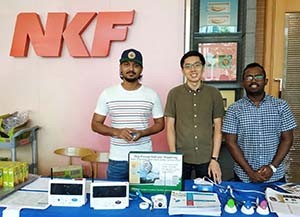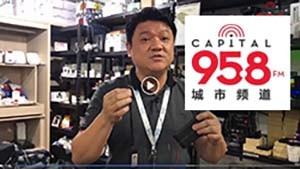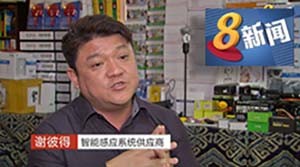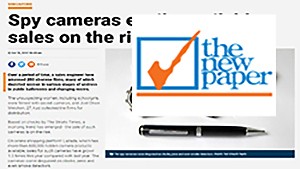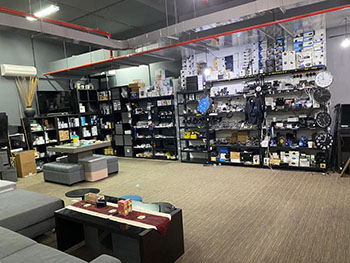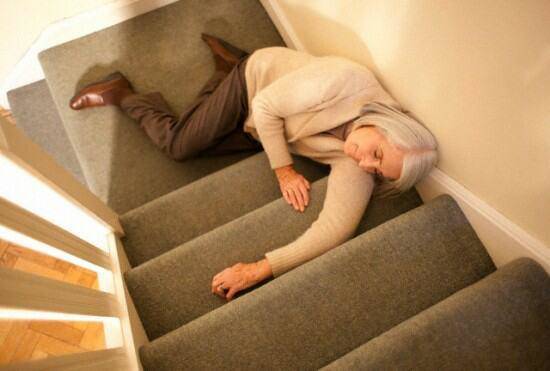
Tips: Screening and assessing the risk of falling
Screening and assessing the risk of falling
Elderly people aged 65 years or older should be screened for fall risks once per year. Risk of falls can be screened for quickly by checking for a history of falls in the last year and performing the Timed up & go (TUG) test. High risk exists if fall history is positive and TUG is positive (completed in more than 14 seconds); risk is moderate if fall history is positive or TUG is positive; risk is low or absent if fall history is negative and TUG is negative (completed in less than 14 seconds). For those with a high risk of falling, comprehensive assessment is strongly recommended to detect specific risk factors. This assessment must be multidisciplinary and multifactorial. It must also include an assessment of the concerned person’s home. For those with a moderate or low (or no) risk of falls, a minimal assessment of at least the following elements is recommended
: – medication
: – dangers in the home
: – chronic or acute diseases
The ability of sociomedical care providers to detect a risk of falling in elderly individuals and identify their modifiable risk factors using simple screening tools and other information is a major element of fall prevention. This process should allow them to provide adapted interventions and thus increase the likelihood of measurable results in fall reduction.
To further increase their effectiveness, it is recommended to provide fall prevention programs for those elderly people who are the most vulnerable to falls. These individuals will thus benefit from better-adapted and more effective targeted interventions (American Geriatrics Society et al., 2001; National Ageing Research Institute, 2004; Gillespie, Gillespie, Robertson et al., 2003). To detect the at-risk elderly, the steering committee recommends a two-step screening process.
The entire screening process takes no more than 10 minutes and can be done by all health or sociomedical care providers aware of the issue of falls in the elderly. The screening tests and assessment tools discussed in this section are detailed in the section “For use in practice”.
The first step in screening is to quickly assess balance and gait. Several tests have been designed to screen the elderly for risks of falling by testing motor function capacity, which is one of the principal risk factors for falls (Franchignoni, Tesio et al., 1998; Whitney, Poole et al., 1998; Chiu, Au-Yeung et al., 2003; Lin, Hwang et al., 2004). These tests have different natures and endpoints. For example, some are designed to predict future “fallers” (good sensitivity*), others future “non-fallers” (good specificity*); some test several gait and balance aspects, others only a single aspect; some demand a certain amount of training to interpret their results, others are easy to use and interpret.
Here, simplicity and rapidity have been privileged to facilitate the integration of fall risk screening in daily professional practice. The test proposed here, the Timed up & go (TUG) test, is both simple to use and provides satisfactory sensitivity* and specificity*. Furthermore, it has been validated in the elderly living at home (Podsiadlo and Richardson, 1991; Shumway-Cook, Brauer et al., 2000; Bischoff, Stahelin et al., 2003). Ask the patient to rise from his or her chair without using a non-habitual aid, walk 3 meters, turn around and return to a seated position in the chair. Time the exercise using a watch with a second hand (or a stopwatch) 10. Elderly individuals living at home who do not have balance or gait impairment should be able to complete this exercise in less than 14 seconds. A time superior to 14 seconds indicates reduced mobility and a risk of falling.
A person who has already fallen presents a significantly higher risk of falling again compared to someone who has no history of falling (Campbell, Borrie et al., 1989; Nevitt, Cumming et al., 1989; Luukinen, Koski et al., 1996; Friedman, Munoz et al., 2002). However, elderly people will often not freely admit to falling to the people close to them or to their treating physicians (O’Loughlin, 1991). The second step of the screening consists thus in questioning the patient on a history of falls over the last year (American Geriatrics Society et al., 2001). “Have you fallen during the last year? How many times?” These questions may be accompanied by an exploration of the context of the falls (location, activities and medication use when the falls happened, consequences). This questioning will provide more depth to the assessment.
- There is a history of one or more falls during the past year and balance and gait impairment is detected (TUG superior to 14 seconds). The person presents a high risk of falling again and needs comprehensive assessment with accompanying counselling and exercises adapted to the detected factors (personalized multifactorial program). Comprehensive assessment is presented below.
- The person: – fell once or more during the past year but does not present balance and gait impairment (TUG inferior to 14 seconds); – did not fall during the past year but does present balance and gait impairment (TUG superior to 14 seconds). This person presents a moderate risk of falling or falling again. A minimal assessment of certain risk factors is recommended and any detected risk factors should be addressed with specific interventions. Moderate risk individuals may also be oriented toward multifactorial fall prevention programs.
- There is no history of falls during the past year and balance and gait impairment is not detected (TUG inferior to 14 seconds). This person presents a low (or no) risk of falling. A minimal assessment of certain risk factors is recommended and any detected risk factors should be addressed with specific interventions. Low risk individuals may also be oriented toward health promotion and safety programs, or toward primary prevention programs (see “Key definitions”, p. 22) for fall risk.



